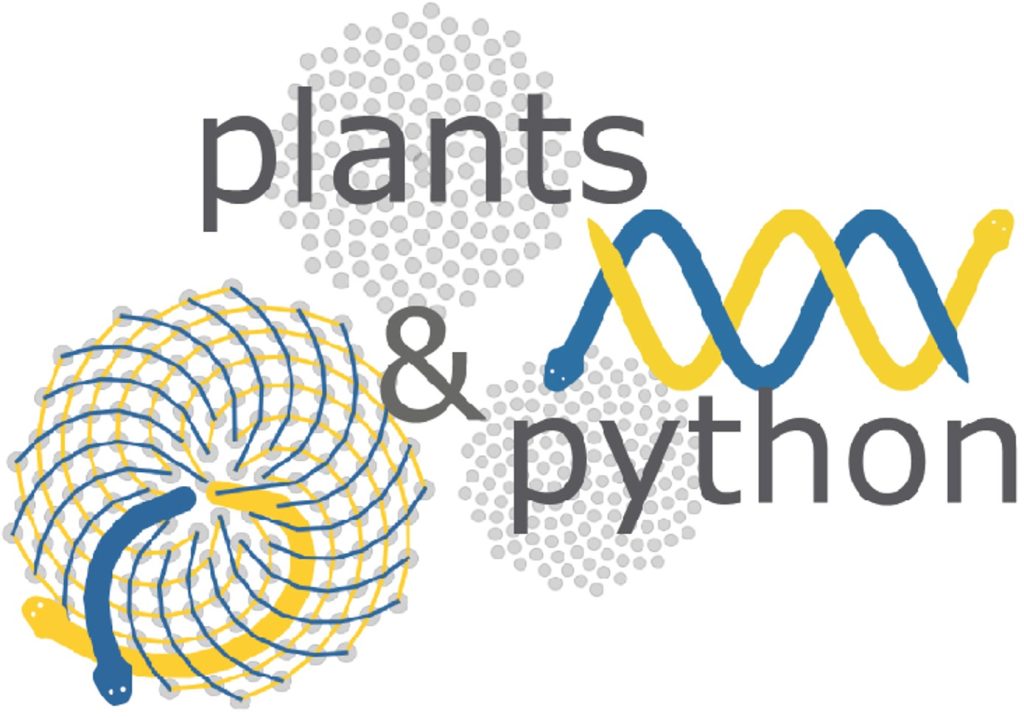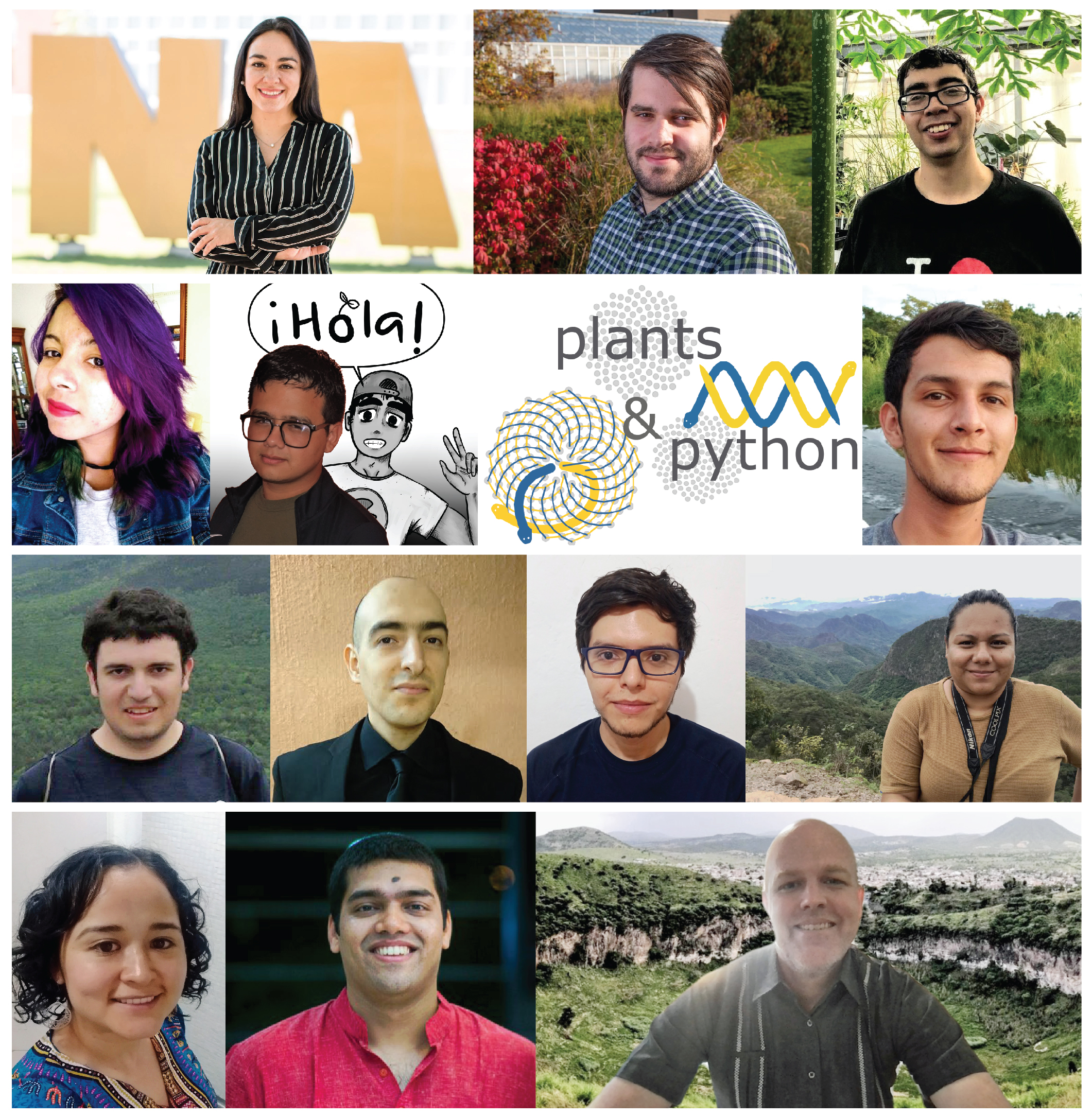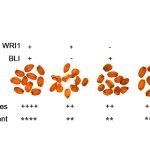New Teaching Tool, “Plants and Python: a series of lessons in coding, plant biology, computation, and bioinformatics”
 We’re excited to announce the publication of The Plant Cell’s latest Teaching Tool, “Plants and Python,” by Robert VanBuren, Alejandra Rougon-Cardoso, Erik J. Amézquita, Evelia L. Coss-Navarrete, Aarón Espinosa-Jaime, Omar Andres Gonzalez-Iturbe, Alicia C. Luckie-Duque, Eddy Mendoza-Galindo, Jeremy Pardo, Guillermo Rodríguez-Guerrero, Pablo Y. Rosiles-Loeza, Marilyn Vásquez-Cruz, Selene L. Fernandez-Valverde, Tania Hernández-Hernández, Sourabh Palande, and Daniel H. Chitwood, freely available in the July 2022 issue of The Plant Cell.
We’re excited to announce the publication of The Plant Cell’s latest Teaching Tool, “Plants and Python,” by Robert VanBuren, Alejandra Rougon-Cardoso, Erik J. Amézquita, Evelia L. Coss-Navarrete, Aarón Espinosa-Jaime, Omar Andres Gonzalez-Iturbe, Alicia C. Luckie-Duque, Eddy Mendoza-Galindo, Jeremy Pardo, Guillermo Rodríguez-Guerrero, Pablo Y. Rosiles-Loeza, Marilyn Vásquez-Cruz, Selene L. Fernandez-Valverde, Tania Hernández-Hernández, Sourabh Palande, and Daniel H. Chitwood, freely available in the July 2022 issue of The Plant Cell.
Download the resources here. (Scroll down to Supplementary Data and open the zip file). Note that this article does not include a set of PowerPoint slides, unlike the other articles in this series. This is article number 44 in the Teaching Tools in Plant Biology series. You can find all of the Teaching Tools in Plant Biology articles here.
Plants & Python is a series of lessons intended to teach coding learning objectives in Python, a general programming language, using datasets and mathematical examples inspired by plants. All materials are available online at https://plantsandpython.github.io/PlantsAndPython. The lessons include video explainers, step-by-step guides that lead students so they can complete the exercises and explore the applications of coding to plant science.
This Teaching Tool is presented in both English and Spanish!
It is the product of a multi-year project involving several PIs (Alejandra Rougon-Cardoso, Robert VanBuren, Daniel H. Chitwood) and students. The full title includes both languages: Plants & Python: a series of lessons in coding, plant biology, computation, and bioinformatics / una serie de lecciones de programación, biología vegetal, cómputo, y bioinformática.
The course was taught for credit as a graduate class at Michigan State University and the Universidad Nacional Autónoma de México (UNAM) system, with both US and Mexican students virtually participating together during the pandemic. It was also taught to each incoming cohort of Research Experiences for Undergraduates (REU) students for the Plant Genomics @ MSU program funded through NSF, allowing undergraduates to learn computational skills and bioinformatics before starting their summer research experiences.
The project link is https://plantsandpython.github.io/PlantsAndPython

The Plants & Python authors. From left to right, top to bottom: Alejandra Rougon-Cardoso, Robert VanBuren, Erik J. Amézquita, Evelia L. Coss-Navarrete, Eddy Mendoza-Galindo, Aarón Espinosa-Jaime, Jeremy Pardo, Guillermo Rodríguez-Guerrero, Pablo Y. Rosiles-Loeza, Marilyn Vásquez-Cruz, Selene L. Fernandez-Valverde, Sourabh Palande, and Daniel H. Chitwood
We asked the authors to tell us a bit more about this project
Alejandra Rougon-Cardoso (Laboratory of Agrigenomic Sciences, Universidad Nacional Autónoma de México, ENES-León, León, Guanajuato, México): “Plants & Python has been a great project of international collaboration which aims to transmit knowledge without barriers, and contribute to the inclusiveness of education.”
Eddy Mendoza-Galindo (Laboratory of Agrigenomic Sciences, Universidad Nacional Autónoma de México, ENES-León, León, Guanajuato, México): “Plants are amazing, and so is their science. As biologists, big data and programming are sometimes scary. Plants and Python is a unique way to learn computational plant science. Learning was never that easy. Going through the lessons is an exciting journey. It was made for everyone: it doesn’t matter which academic background you come from, which part of the world, or what language you speak. We all are invited to admire plant beauty and magnificence from our computers!”
Marilyn Vásquez-Cruz (Laboratorio Nacional de Genómica para la Biodiversidad (Langebio)-Centro de Investigación y de Estudios Avanzados (Cinvestav), Irapuato, Guanajuato, México: “Plants & Python is great material for those who want to explore this programming language. It does not matter if you are a beginner or have advanced knowledge on this topic. The exercises are designed using plant data as examples, which makes the lessons more and more interesting as you go along. You will be able to solve mathematical problems until you draw some beautiful graphs”
Erik J. Amézquita (Michigan State University, East Lansing, Michigan, USA): “This material can be very insightful for the non-biology crowd, even for those who already feel comfortable with coding. As a mathematician by training, I was very surprised about the computational richness within plants. It may sound naive, but I thought plants were simply growing there. Turns out that, dare I say it, plant biology is way more difficult than math and computer science. Evolution, development, multiple omics, oh my!”
Aarón Espinosa-Jaime (Laboratory of Agrigenomic Sciences, Universidad Nacional Autónoma de México, ENES-León, León, Guanajuato, México): “This is just the beginning. You just need a sparkle of imagination and inspiration to start your own plant omic project.”
Pablo Y. Rosiles-Loeza (Laboratorio Nacional de Genómica para la Biodiversidad (Langebio)-Centro de Investigación y de Estudios Avanzados (Cinvestav), Irapuato, Guanajuato, México): “An incredible effort to bring the foundations of Python data analysis to a wider audience.”
Selene L. Fernandez-Valverde (Laboratorio Nacional de Genómica para la Biodiversidad (Langebio)-Centro de Investigación y de Estudios Avanzados (Cinvestav), Irapuato, Guanajuato, México): “I am excited about the great reception the course had and interested in how this hybrid online course format can open a path to increasing diversity in students cohorts, as well as allowing students to create international professional relationships from the undergraduate stage.”
Daniel H. Chitwood (Michigan State University, East Lansing, Michigan, USA): “It has been a joy to work across the disciplines of plant and computational sciences, the languages of English and Spanish, and the countries of the US and México. I am thankful for the chance to work with the best group of collaborators, students, and researchers and I’m looking forward to what comes next!”
Download the resources here. Note that this article does not include a set of PowerPoint slides, unlike the other articles in this series. This is article number 44 in the Teaching Tools in Plant Biology series. You can find all of the Teaching Tools in Plant Biology articles here.



